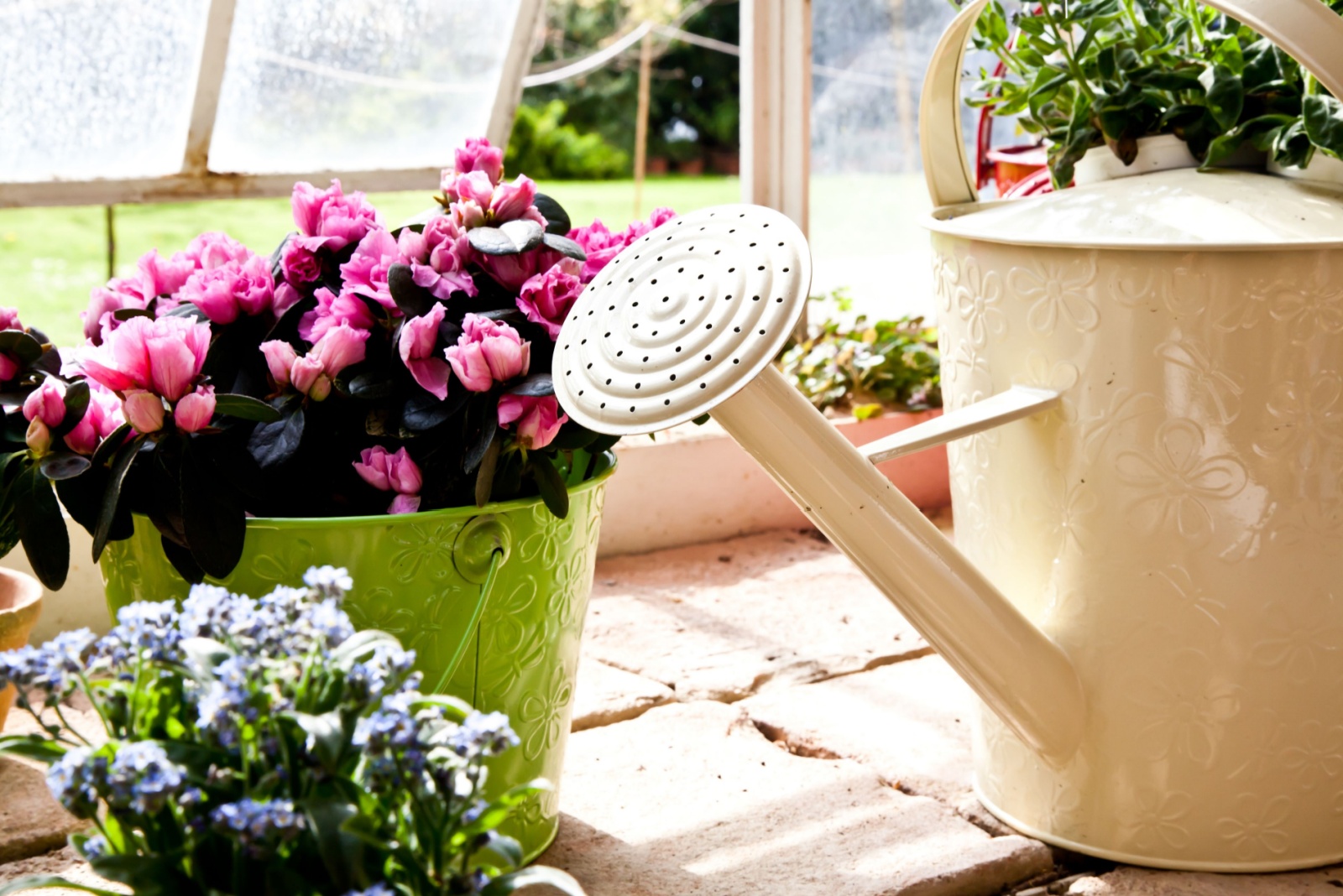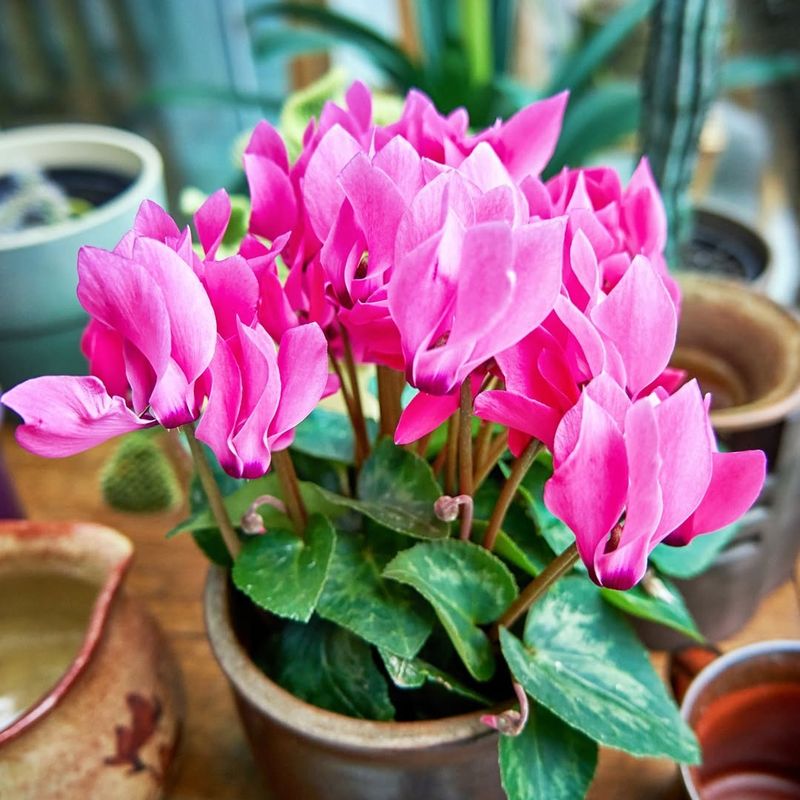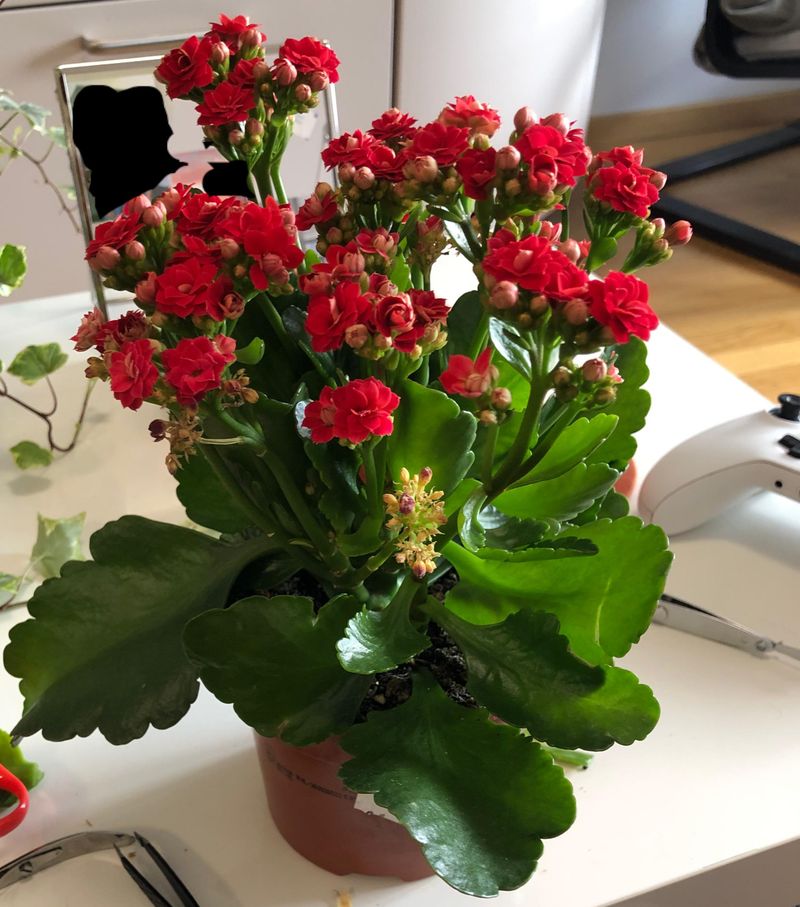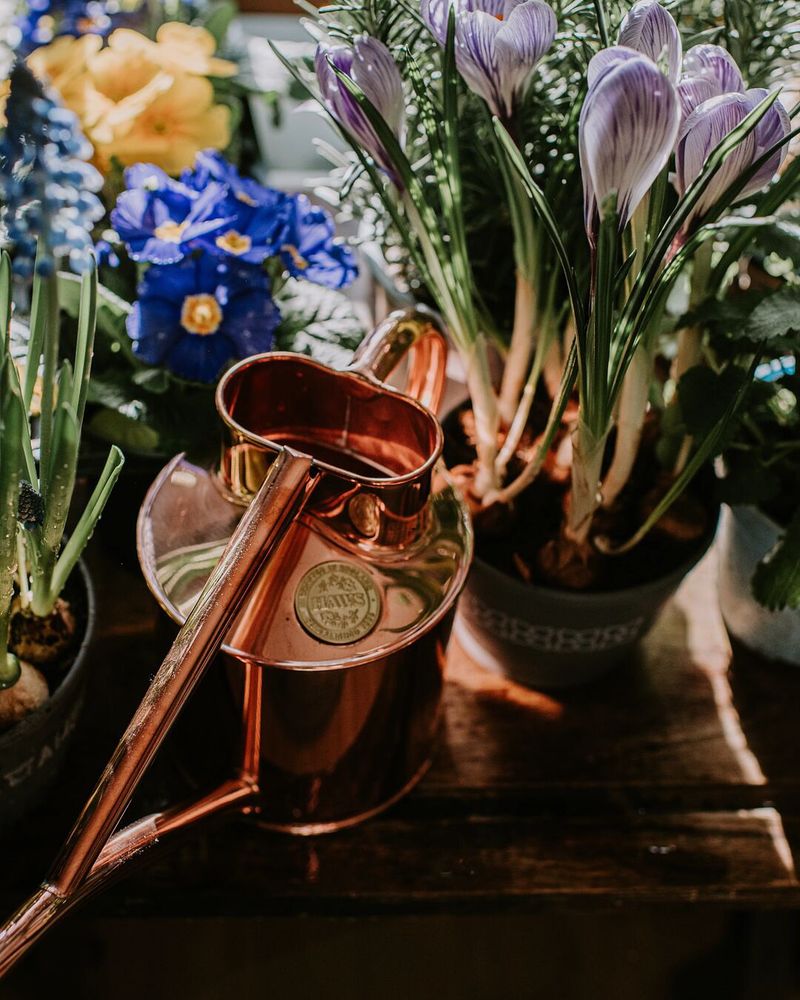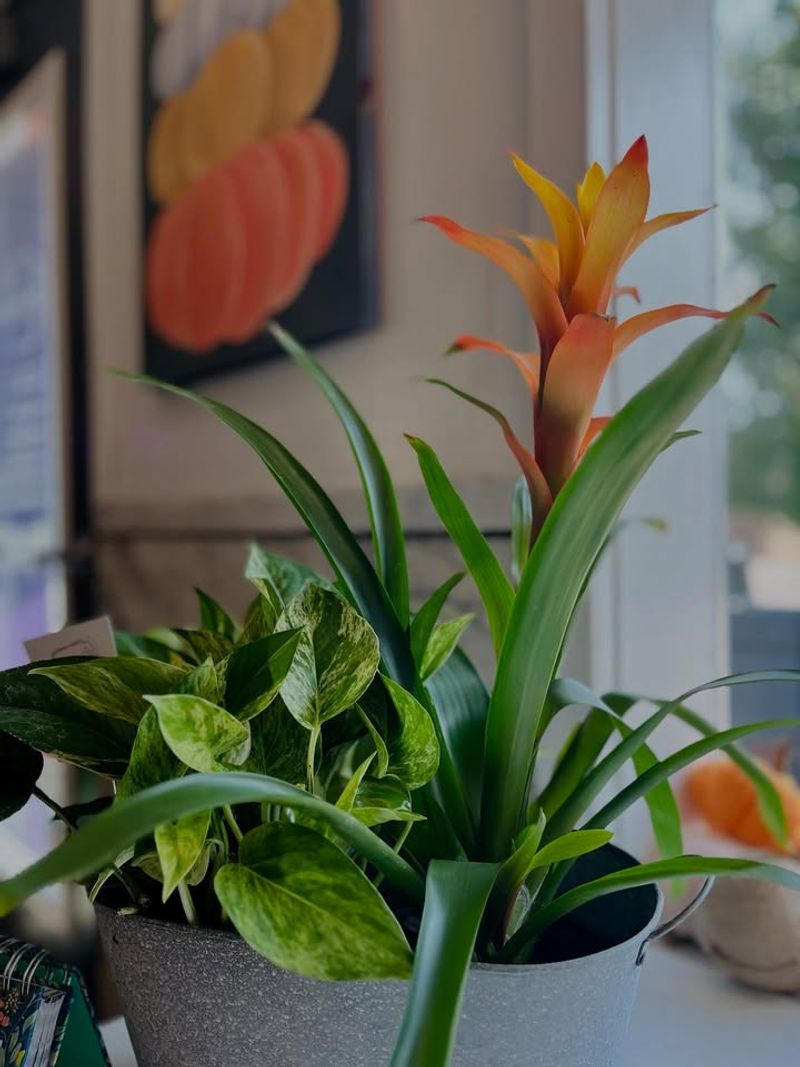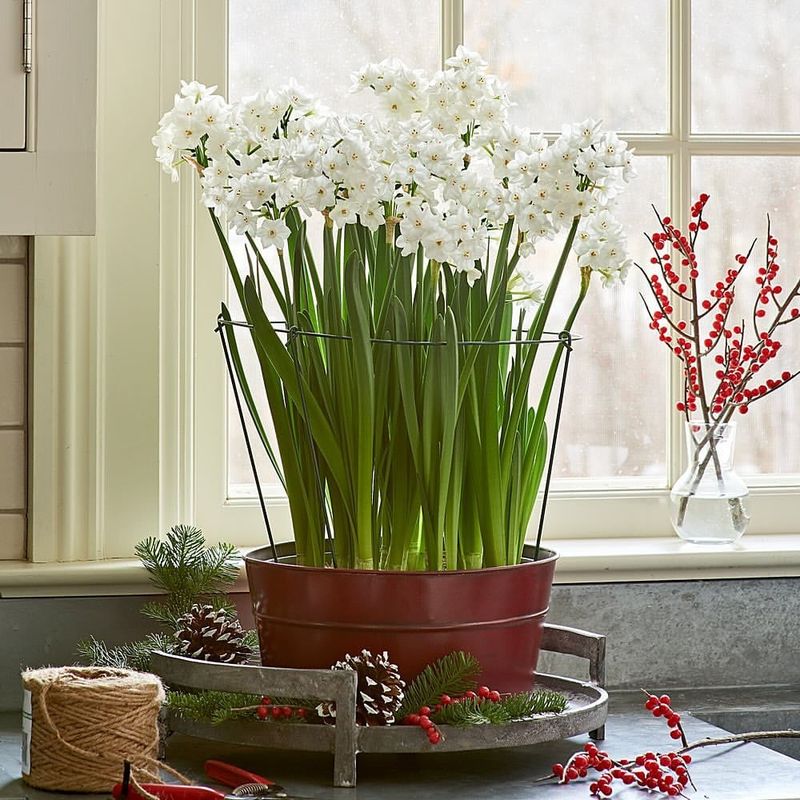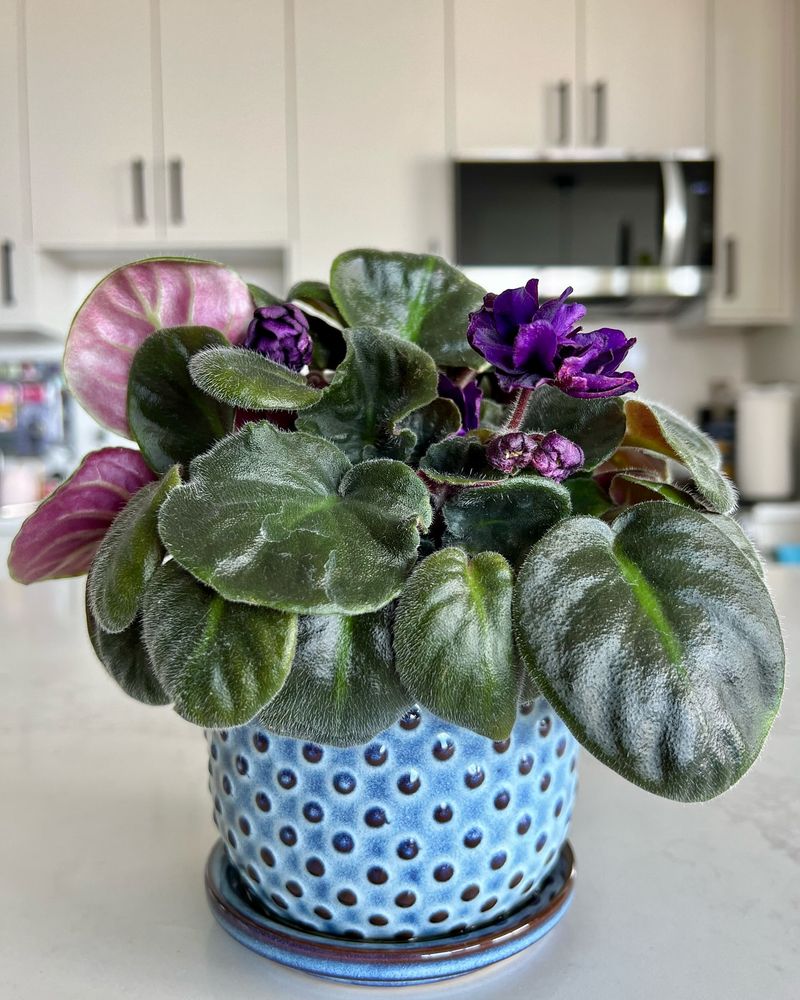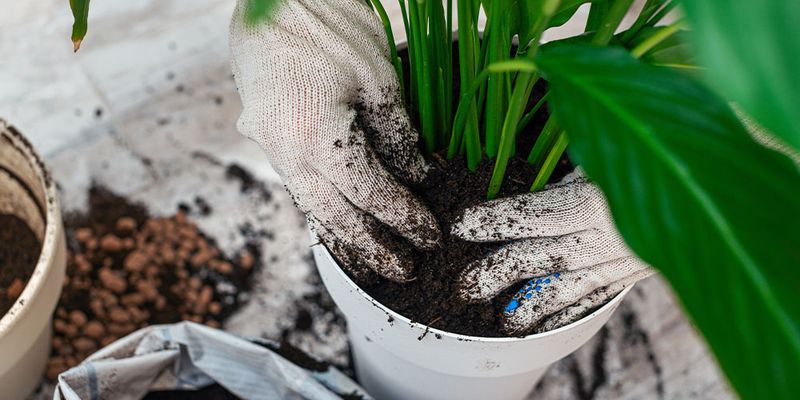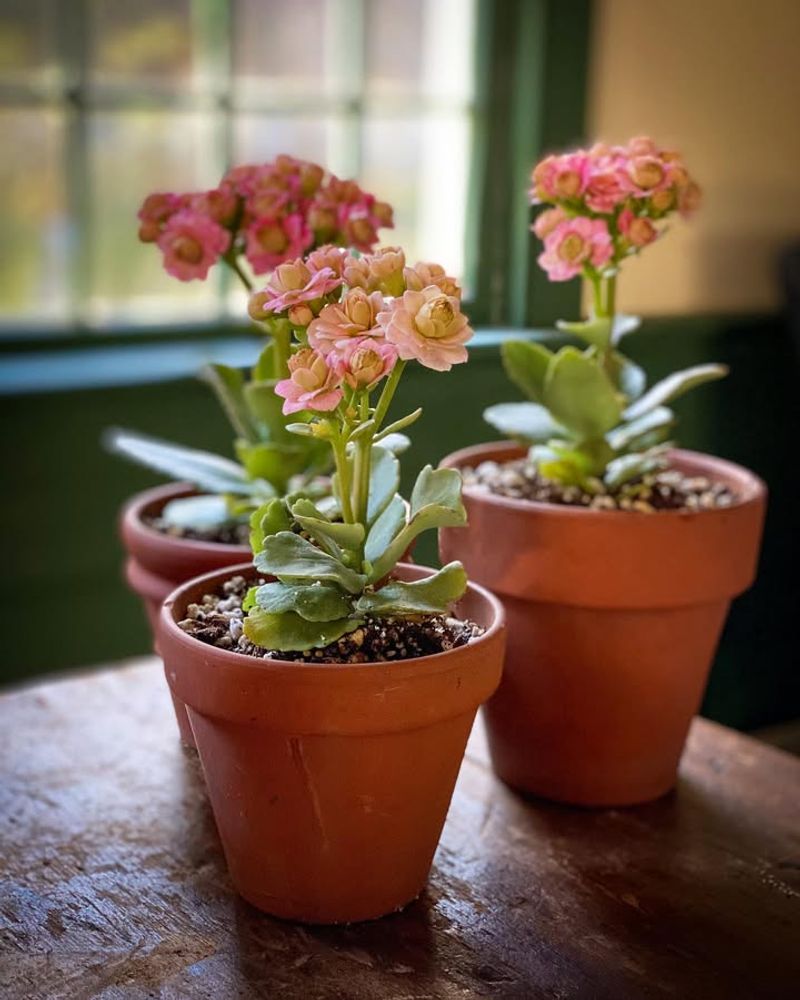Growing flowering plants indoors brings color and joy to Michigan homes, especially during those long winter months when everything outside is covered in snow. The harsh Michigan climate with its freezing winters and varying humidity levels can make indoor gardening tricky.
With the right approach, though, your flowering houseplants can thrive year-round despite what Mother Nature is doing outside your windows.
1. Find The Perfect Light Spot
Most flowering plants need bright, indirect sunlight to produce those beautiful blooms. Place your plants near east or west-facing windows in your Michigan home for optimal light exposure. During winter’s shorter days, you might need to relocate plants closer to windows.
South-facing windows can work too, but watch for scorching during summer afternoons. North-facing windows typically don’t provide enough light for flowering varieties, though some plants like peace lilies can manage.
2. Master The Michigan Humidity Challenge
Michigan homes get extremely dry during winter when heating systems run constantly. Most flowering houseplants originated in tropical climates and crave moisture in the air. Group plants together to create a mini humidity zone, or place trays with pebbles and water beneath pots.
Running a humidifier near your plant collection works wonders too! For bathroom-friendly varieties like orchids, the natural steam from showers provides that tropical feeling they adore.
3. Water Wisely, Not Weekly
Forget rigid watering schedules! Instead, check the soil moisture by sticking your finger about an inch deep. Only water when it feels dry at that depth. Michigan’s seasonal changes affect indoor conditions dramatically – plants typically need less water in winter than summer.
Room temperature water works best since cold water can shock plant roots. Yellow leaves often signal overwatering, while brown, crispy edges typically mean your plant is thirsty. Each flowering plant has unique needs, so research your specific varieties.
4. Feed Flowering Plants Properly
Blooming takes energy! Feed your flowering houseplants with phosphorus-rich fertilizer during their growing season, typically spring through fall. Look for fertilizers with a higher middle number in the NPK ratio (like 10-30-10) to encourage flower production.
Cut back on feeding during winter months when plants naturally slow their growth in response to less light. Over-fertilizing causes more harm than under-fertilizing, so always dilute to half the recommended strength. Your plants will reward your careful attention with gorgeous blooms!
5. Protect From Temperature Swings
Michigan homes experience dramatic temperature changes – from blasting heat vents in winter to chilly drafts near windows. Keep flowering plants away from heating vents, radiators, fireplaces, and drafty windows or doors.
Most houseplants prefer temperatures between 65-75°F during day and no lower than 55°F at night. Cold damage happens quickly! Move plants away from windows on particularly frigid nights, and never let leaves touch cold glass during winter months.
6. Choose Michigan-Friendly Varieties
Some flowering plants naturally cope better with Michigan’s indoor conditions. African violets, peace lilies, and Christmas cactus thrive in average home humidity and tolerate lower light. Orchids, particularly Phalaenopsis varieties, rebloom reliably in Michigan homes when given proper care.
Cyclamen and kalanchoe bring vibrant color during winter months. Jasmine and hibiscus do well in summer but need extra attention during heating season. Starting with these Michigan-friendly varieties increases your chances of success!
7. Repot With Purpose, Not By Calendar
Many flowering plants actually bloom better when slightly root-bound! Don’t automatically repot plants on a strict schedule. Wait until you see roots growing through drainage holes or the plant dries out unusually quickly.
Spring makes the ideal repotting season, giving plants the growing season to recover. Choose pots just 1-2 inches larger than the current container. Use well-draining potting mix specifically formulated for flowering plants – regular garden soil compacts too much indoors.
8. Groom Regularly For Maximum Blooms
Remove spent flowers promptly to encourage new blooms – a process called deadheading. Snip yellowing leaves to maintain plant health and appearance. Regular dusting of leaves with a soft cloth improves photosynthesis, especially important during Michigan’s low-light winter months.
Rotate plants weekly for even growth since Michigan’s winter sunlight comes in at sharp angles. Prune leggy growth to maintain compact shape. This hands-on attention lets you spot pest problems early before they damage your beautiful indoor garden.

